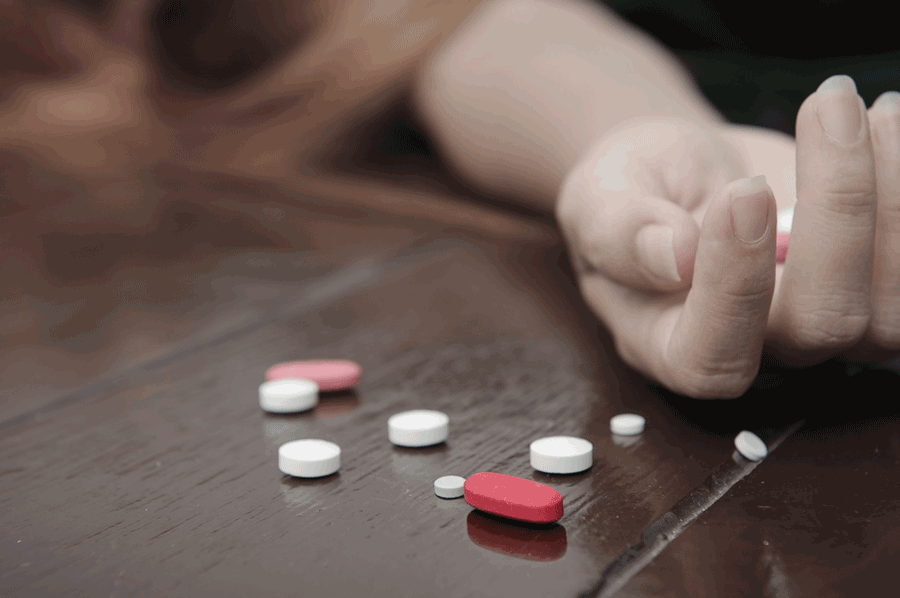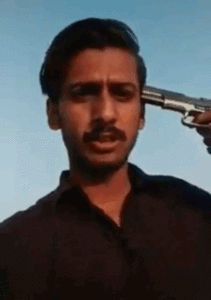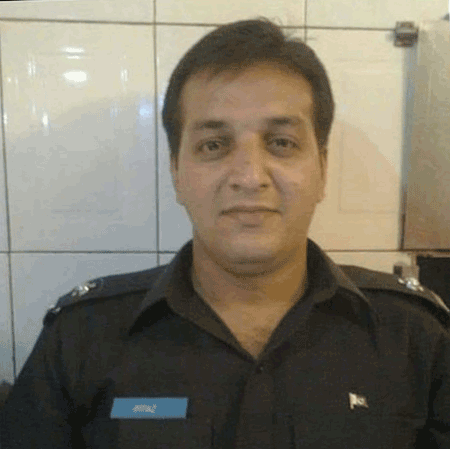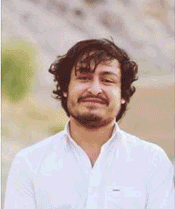Is Suicide Preventable?
By Deneb Sumbul | Society | Published 6 years ago
On October 21, 2019, in a first of its kind incident, Muneer Ahmad Kalor, a young man from Mirpur Mathailo in Sindh’s Ghotki district, committed suicide live on Facebook after having an argument with a close friend. In a six-minute video, that went viral on social media, he addressed his family and friends in Sindhi, saying, “I can see no way out of this pain and hence am ending my life.” Kalor was trying to win back the friendship of an angry friend, who ignored his pleas. Dejected, he returned home and in his final Facebook post, he said, “You always remained important to me my entire life.” Apologising to his friends for any wrong he may have done to them, he pulled the trigger of the pistol he held to his head.
Suicide has become a global phenomenon and a public health issue. According to the World Health Organisation (WHO), an estimated 800,000 people commit suicide annually, and it is the leading cause of death among 15 to 29-year-olds. Violence, sexual abuse, bullying and cyber-bullying are the leading causes of the increasing number of suicides among adolescents.

The Human Rights Commission (HRCP) Report 2018 states that depression is the most common cause of suicide in Pakistan. According to the report, 1,338 people committed suicide in Pakistan due to depression. The report also highlights social factors such as political instability, lack of peace, lack of basic necessities of life, unemployment, health issues, poverty, homelessness, family disputes and a host of social pressures as the leading cause of mental health issues.
Suicide carries a significant stigma in Pakistan, mainly because it is considered haram in Islam – a major reason why it is under-reported. Until recently, suicide and attempted suicide were considered a punishable offence under the Pakistan Penal Code, with no consideration for mental health as the underlying cause. The Sindh Mental Health Act of 2013 now requires anyone attempting suicide to have a psychiatric assessment, but the stigma attached to suicide remains unchanged.
An application to decriminalise attempted suicide was moved in the Senate in 2017. The Senate Committee held a human rights meeting in September of that year which was attended by leading psychiatrists. Under Dr. Haroon’s leadership, the group convinced the Senate members with the reference of recent researches that attempting to take one’s own life is secondary to diagnosed/undiagnosed depression. Unfortunately, the application was lost in the sea of law-making technicalities.
What is crucial to understand is that suicide is preventable. An estimated 90 per cent of the people who committed suicide had an underlying mental illness, mostly depression that was either diagnosed or undiagnosed. Which is why the theme for 2019’s World Mental Health Day, set by the World Federation for Mental Health was, “Suicide Prevention.”

Muneer Ahmed Kalor, of Sindh’s Ghotki district shot himself live on Facebook after pleading and failing to win back his friend.
In a seminar held in October 2019 by the Pakistan Association for Mental Health (PAMH) on Mental Health Promotion and Suicide Prevention, Vice President Dr Uzma Ambareen said, “Our work entails reminding people of all the reasons why they shouldn’t commit suicide because they have already thought of all the reasons why they should. Mostly, people considering suicide over a long time, build hurdles or barriers in the way of the act, such as, ‘this is going to affect my family, or my friends, or this is haram, etc.’ But as they get closer to committing suicide, the barriers fall away, one by one, until they reach a point where they have convinced themselves that others will be better off without them, and that even God will forgive them. Suicide takes place when no barrier is left between the person and the act itself.”
Dr Ambareen explained that for a strong individual, it is embarrassing to speak of suicidal tendencies, as suicide is perceived as a cowardly act – which it is not. “It takes tremendous courage to overcome the inner struggle for self-preservation to perform that final act. Speaking to a vulnerable person about suicide does not plant the idea, that is just a myth. If anyone even gives the slightest hint of suicide, it should be taken very seriously because it means this person is reaching out to you. Pushing them away or shutting them up or shunning them might just be the end of the rope for them.”
Professor Raza ur Rehman, former Chairman Psychiatry at the Dow University Health Sciences, recalled a doctor serving in a hospital ICU. He had added an anaesthetic agent to an intravenous drip, administered the drip on himself and slept. In the morning he was found dead. To assess the young doctor’s state of mind, the professor examined his last Facebook page message – it was about doctors being in the service of people. Among the comments below, one doctor commented that depression does not kill anyone, it is the effects of society that kill a person.
“I concluded that if doctors were unable to understand the underlying problem, how can the common man? In 90 per cent of suicide cases, people are suffering from mental illnesses and depression is at the top. There are different symptoms for depression – suicidal tendency is the one we need to understand. Every 40 seconds somewhere someone dies of suicide in the world,” said Professor Rehman.
According to WHO, in 2016, the rate of suicide in the US was 19.3 per cent ; in India 16.3 per cent, while in Pakistan, it was per cent. How could the figures from our neighbouring country be so different when we are culturally so similar?
There are hardly any reliable studies conducted in Pakistan on suicide.
When data is compared, more females attempt suicide than men, but men are more successful in completing the act of suicide, because they adopt more violent methods. Among females in Pakistan, domestic problems such as conflicts with spouse or in-laws or a husband’s negligence are the most commonly listed reasons for suicide, while financial problems dominate among the males.
Professor Rehman said, while working at Dow Medical University, almost every suicide patient brought to his department when questioned as to why they attempted suicide, said they had intended to take a cough syrup and took DDT by mistake – which is unlikely because DDT has a very strong smell. Among women attempting suicide, taking Benzodiazepine is the most common method, because they prefer to die painlessly. What they don’t know – which is a good thing – is that no matter how much Benzodiazepine is taken, it does not cause death.

ASI Imtiaz, a serving investigations officer in Lahore, committed suicide after being reprimanded and suspended over a leave request.
“Even the most clinically depressed person wavers between wanting to live and wanting to die till the very last moment. On average, more than half the people who committed suicide contacted their physicians before performing the act. That is why it is said that suicide is basically a cry for help,” said Professor Rehman. Some of the warning signs of a person about to commit suicide are withdrawal from family, friends and other social activities; making financial arrangements, giving away personal belongings, using drugs, refusing to get professional help, etc.
Under the Lunacy Act of 1912, survivors of suicide were given a one-year prison term and a fine of Rs. 30,000. After a failed suicide attempt, a person is immediately harassed by the police and other authorities for money and threatened with jail and a fine as soon as he arrives in the emergency ward of Civil Hospital or Jinnah Hospital. To sweep the mishap under the carpet, an amount anywhere between Rs 50,000 to three lacs is demanded by the police – one of the main reasons why suicide cases are misreported.
Despite the passage of the Mental Health Act 2013, there is a disconnect between the law and practice. It is essential to remove the disparity between the Pakistan Penal Code and the Pakistan Mental Health Act to decriminalise suicide. Suicide prevention requires capacity-building of mental health care services and availability of multi-disciplinary care not only by psychologists, psychiatrists, specialist nurses and social workers, but also a collaborative and holistic approach that involves law enforcement agencies, educators, families, school psychologists and teachers. In addition, launching a vast awareness campaign, availability of free helplines in Pakistan and the support of an economic programme are needed for those on the verge of committing suicide.
“The Mental Health Act to decriminalise suicide was introduced in the Sindh Assembly through Dr Haroon’s efforts. I introduced the Criminal Laws (Amendment) Bill 2017 as a private bill: Omission of Section 325 of the Pakistan Penal Code, 1860. This bill concerned people who had attempted to commit suicide and had survived. Dr Haroon and other psychiatrists were invited by the Senate steering committee to make a presentation.” Convinced, the Senate passed this bill, which said it was the duty of the welfare state to provide relief to its citizens and provide rehabilitation facilities instead of criminalising the one who is already suffering. However due to lack of a quorum, the bill did not pass in the parliament. Soon another attempt will be made to table the bill in the National Assembly.
In Chapter 7, ‘Protection of Human Rights of Mentally Disordered Persons’ of the Sindh Mental Act, 2013, in cases of attempted suicide, the person shall be assessed by an approved psychiatrist and if found to be suffering from a mental disorder, shall be treated appropriately under the provisions of this Act. In other words, suicide survivors will not be punished for the attempt.
At the seminar, Senator Khawaja announced that the Sindh Mental Health Authority (SMHA) has set up two Helplines: one in Jinnah Post Graduate Medical Centre (JPMC) and the other in Sir Cowasjee Jehangir Institute of Psychiatry. All the calls from districts on the right side of River Indus, which includes Karachi, Jamshoro, Dadu, Larkana, Shahdadpur, Kashmore and Jacobabad will be received by JPMC. Calls from districts on the left side of River Indus, which include Ghotki, Sukkur, Khairpur, Naushero Feroz, Thar, etc, will be received by Sir Cowasjee Jehangir Institute of Psychiatry. The project is in its final stages of implementation in Sindh. The helplines will be a breakthrough because a person who plans to kill himself can now at least have a last moment opportunity to get help and a possible suicide can be prevented.

Yousaf Pirkani, 3rd year MBBS student of BUMHS committed suicide reportedly due to mental stress and depression.
Presently, there are only 400 qualified psychiatrists in Pakistan. Only 140 practise in Sindh, out of which 80 work in Karachi and Hyderabad. There are only four well established and operational psychiatry wards in Karachi – at the JPMC, Dr Ruth Pfau Civil Hospital, Sindh Government Hospital and Lyari Hospital. Outside Karachi, there is only the Sir Cowasjee Jehangir Institute of Psychiatry in Hyderabad, while the districts of Sukkur, Nawabshah and Mirpur Khas do not have any proper psychiatric wards.
It is humanly impossible to cater to a four-and-a half crore population in Sindh with the number of available specialists. Accordingly, the Sindh Mental Health Authority held a meeting attended by 110 of the 140 psychiatrists in Sindh. It was decided that 6,000 doctors, Lady Health Workers (LHWs), members of civil society and 600 judges – from the civil courts to the high courts – will be given training on the prevention of suicide. Eventually, the number of trained people will be raised to 10,000, to deal with matters of depression, bipolar disorder, drug addictions, anxiety and post-partum psychiatry.
Psychiatrist Dr Iqbal Afridi stated at the PMAH seminar, that everyone was vulnerable to depression. It becomes serious, however, if it persists for more than two weeks. There are societal myths that suicide happens without warning and that one should not ask a person about their suicidal feelings. Both these assumptions have been debunked by psychiatric research. Suicide warning signs can be noticed by friends.
Dr Afridi said preventive measures such as making poisonous pesticides and detergents difficult to access; good parenting, easy access, to helplines, psychotherapy and the help of family, friends and religion can be suicide deterrents.
The most striking speaker at the seminar was Atiya Naqvi, a clinical psychologist, who spoke poignantly to the audience. Her 24-year-old son had committed suicide last year in Boston by hanging himself. There is severe social stigma in Pakistan against family members of a person who has committed suicide. She spoke of the stigma they faced as a family, especially her other children who were, according to studies, under suicide risk. “We are choosing to be ashamed, that is why we feel the stigma,” she said. “It is very interesting that our society forces us to act in a certain way and we follow blindly. When I received the news of our son, according to social expectations, I should have fainted, fallen down or died, but I was in a protective mode and did not fall apart because I was thinking of my younger son and daughter.
“We give ourselves negative options saying, ‘I am helpless. I am finished. I am destroyed.’ We have to recognise what line of thought is beneficial for us. What was the reason my son opted to commit suicide? I feel he did not pay attention to his mental health, and paid attention to societal pressures. My son left a two-hour video behind before he died, explaining his reasons. He spoke of how he suffered from feelings of inadequacy.”
“Mental health is about understanding our feelings and keeping them under control, rather than being controlled by them. Do not associate yourself by what is defined by society because that is the biggest disservice that you do to yourself. Doctors told us when we reached the US, that our son “had died of cardiac arrest,” that we could claim. I will always love my child but I cannot live my life by lying. I made a choice that I will never lie about the suicide to please society,” said Naqvi.
“We are making choices every moment. So why are so many people finding their lives so burdensome and painful that they are making a choice to end their nightmare? I am hoping that by speaking up, we can alleviate the stigma associated with suicide,” she concluded.
Veteran journalist I. A. Rehman pointed out that prevention of suicide was part of Goal 3 of the Sustainable Development Goals (SDGs). Target 3.4 specifies by the end of 2030, the reduction by one-third of premature mortality from non-communicable diseases through prevention and treatment and promotion of mental health and well-being.
He questioned, “When our total national allocation for health is less than one per cent of the GDP, with no intention of increasing it, then how can Pakistan achieve its target of achieving mental health? It is something we have to continue to pressure our government for. With all of our shortcomings and deficiencies, we are still better off than many countries such as Africa and Latin America, where conditions are indescribably worse. We have the services, facilities and capabilities and some experience on the subject, thanks to the Pakistan Mental Health Association.”
Pakistan has signed WHO’s comprehensive mental health action plan (2013-2020), adopted by the 66th World Health Assembly, in which the principle of human rights is embedded. However, there is little evidence that Pakistan has developed a coordinated national strategy to achieve the objectives. According to PAMH, the country was becoming increasingly ‘depressed’ and a rising incidence of mental disorders was found by the end of 2018, especially in Karachi. Stress levels were worsening over time, and every fourth house had a mental health problem requiring specialised treatment. PAHM cited several reports including of several student suicides in Khyber Pakhtunkhwa over poor exam results, 43 in Tharparkar alone by mid-November. Rising suicide rates were reported in Chitral and Gilgit-Baltistan, particularly among students and married women. Poverty, crime, injustice, intolerance, socio-economic and family pressures are increasingly taking a drastic toll on those most vulnerable to suicide.
The writer is working with the Newsline as Assistant Editor, she is a documentary filmmaker and activist.


